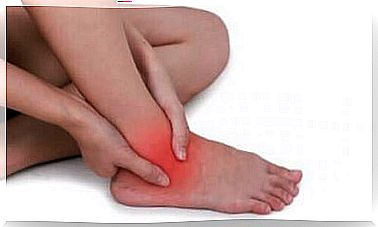Characteristics, Risks And Benefits Of Lotus Birth

Many women feel that modern childbirth no longer makes sense emotionally and spiritually, so more and more women are looking for other options, such as a lotus birth.
However, it is important to remember that what turned childbirth into a highly medicalized, methodical and controlled hospital procedure was the desire to reduce the death and illness of mothers and babies.
Proper care for mothers and babies is a World Health Organization (WHO) priority. The application of evidence-based health interventions has reduced the lifetime risk of maternal death worldwide from approximately one death in 73 women to one in 180.
Therefore , parents should be well informed when deciding how to give birth to their child. This also applies to non-evidence-based practices such as the lotus birth.
What is a lotus birth?
In this form of birth, the umbilical cord is left intact after the baby is born. The baby will remain attached to the umbilical cord and placenta until it detaches on its own. This usually happens between the third and tenth day after birth.
The placenta must be washed to remove any residual blood and is usually wrapped in an absorbent material, such as a diaper. Finally, the caretaker rubs him with salt and aromatic herbs to regulate humidity and prevent unpleasant odors.
The origin of this usage
Lotus Birth gets its name from Clair Lotus Day, who in 1974 observed newborn chimpanzees detach from the placenta naturally. This raised questions about how we deal with this during birth.
The purpose of the umbilical cord and the placenta
A pregnancy would not be possible without the placenta as it acts as a barrier and prevents the mother’s immune system from attacking the baby as if it were a foreign body.
In addition, oxygen and all the nutrients the baby needs for its own development come from the mother’s placenta and umbilical cord. In addition, once the baby is born, it can get oxygen into the blood through its own lungs.

Benefits of the Lotus Birth
The first expected benefit of a lotus birth is that the child does not become anemic, because the blood supply from the placenta is not interrupted. It is also assumed that there is no risk of infection because the umbilical cord is still attached.
Let’s be clear: these are just hypotheses, as there is no scientific evidence to support them.
Why do some families choose to have a lotus birth?
However, the main reason why moms and dads choose to have a lotus birth is none of the above. They do this because they see it as an alternative that tries to add spiritual meaning to the moment of birth.
From this perspective, the placenta is a sacred organ, a symbol of life, fertility, and an unbreakable bond between mother and child. This practice justifies the right of the mother and her newborn to choose the circumstances of the birth.
The impact of a lotus birth on a baby
From the lotus birth point of view, the umbilical cord and placenta form a unit with the baby and the baby has to decide when he or she is ready to separate.
Some people believe that preserving the placenta and umbilical cord prevents the baby from being exposed to the trauma of an abrupt separation from his mother and the organ that protected him during pregnancy. Also, parents report that they spend more time with their babies because it is difficult to move them while they are still attached to the placenta.
The risks of a lotus birth
At this point, you may be wondering why lotus birth isn’t the rule when it’s so good. As mentioned above, there is no scientific evidence that it is a safe and beneficial practice.
Actually, lotus birth is risky and most experts advise against it. Until there is solid evidence for it and there are reports of cases where it posed a danger to the newborns, it is neither ethical nor logical to recommend it.
Contrary to the expectation that there is no risk of infection to the baby from not cutting the umbilical cord, the decomposing placenta can become a source of bacteria. There are known cases of omphalitis (infection of the navel) and sepsis (infection of the blood).
In addition, uncontrolled and permanent blood flow from the placenta can lead to:
- jaundice (yellowing of eyes and skin)
- polycythemia (too many red blood cells making the blood more viscous)
- thrombosis
Recommendations for a Lotus Birth
Keep the following in mind when deciding under what circumstances your child should be born:
- Educate yourself through credible sources and resolve any doubts and concerns with a doctor you trust.
- The method of delivery (vaginal or cesarean section) will depend on your health history, the course of the pregnancy and the baby’s well-being. It will be easier to decide if you have received good pregnancy checks and have had all the indicated tests.
- Do not have the baby born at home unless it is a low-risk pregnancy. That is, as long as there are no indications that the mother or her child is at risk.
- Easy access to a health center is essential. The functioning of the health network is not the same in all countries. For example, up to 40% of low-risk pregnancies can have complications at the time of delivery.
- Doctors strongly recommend preparing for childbirth. This includes the birth plan and prenatal courses.
Active control of contractions and delivery
Postpartum hemorrhage remains the most common cause of maternal death. Active management of labor or the third stage of labor is an essential intervention to prevent this complication.
Active control involves three things:
- The primary intervention is the use of a drug such as oxycodone to help the uterus contract, according to the World Health Organization (WHO).
- Controlled traction of the umbilical cord.
- Massage the uterus.
Delayed Clamping of the Umbilical Cord
The WHO also recommends delayed clamping of the umbilical cord. This means not clamping or cutting the umbilical cord immediately, but waiting at least one minute after the baby is born to do this.
An exception to this are newborns who require respiratory support, as delayed umbilical cord clamping prevents anemia and other serious conditions that can affect them.
Respectful maternity care
The recommendations of international maternity and maternity care organizations aim to treat the mother with dignity and respect. They also protect its privacy, confidentiality and integrity.
The aim is not only to prevent maternal illness and death, but also to empower women and assert their rights. This process begins before conception and continues after the baby is born.
Human childbirth
Skin-to-skin contact is critical during the first hour to facilitate breastfeeding after birth. This is mainly when the mother is healthy and the baby is born without complications,
The nurse places the newborn on the mother’s stomach. She dries him off and assesses his breathing. In the meantime, they wait a few minutes before clamping the umbilical cord. Then they cover the baby with a hood and a dry blanket.
They do not skip other routine care. They only postpone it until after the first hour a baby has close contact with its mother.

A lotus birth is not a good idea
Despite the lack of scientific evidence for the lotus birth, there is no denying that parents who have experienced it consider it a positive experience that they would be happy to repeat.
This is partly because our human feelings, beliefs, thoughts, emotions and spirituality are an essential part of our lives. Medical knowledge, on the other hand, often focuses on the biological and physical, neglecting other needs.
Parents should research and verify the features of the care provided as part of their preparation for childbirth. Lotus birth is not recommended, but many health centers employ some very kind, human and spiritual alternatives.









